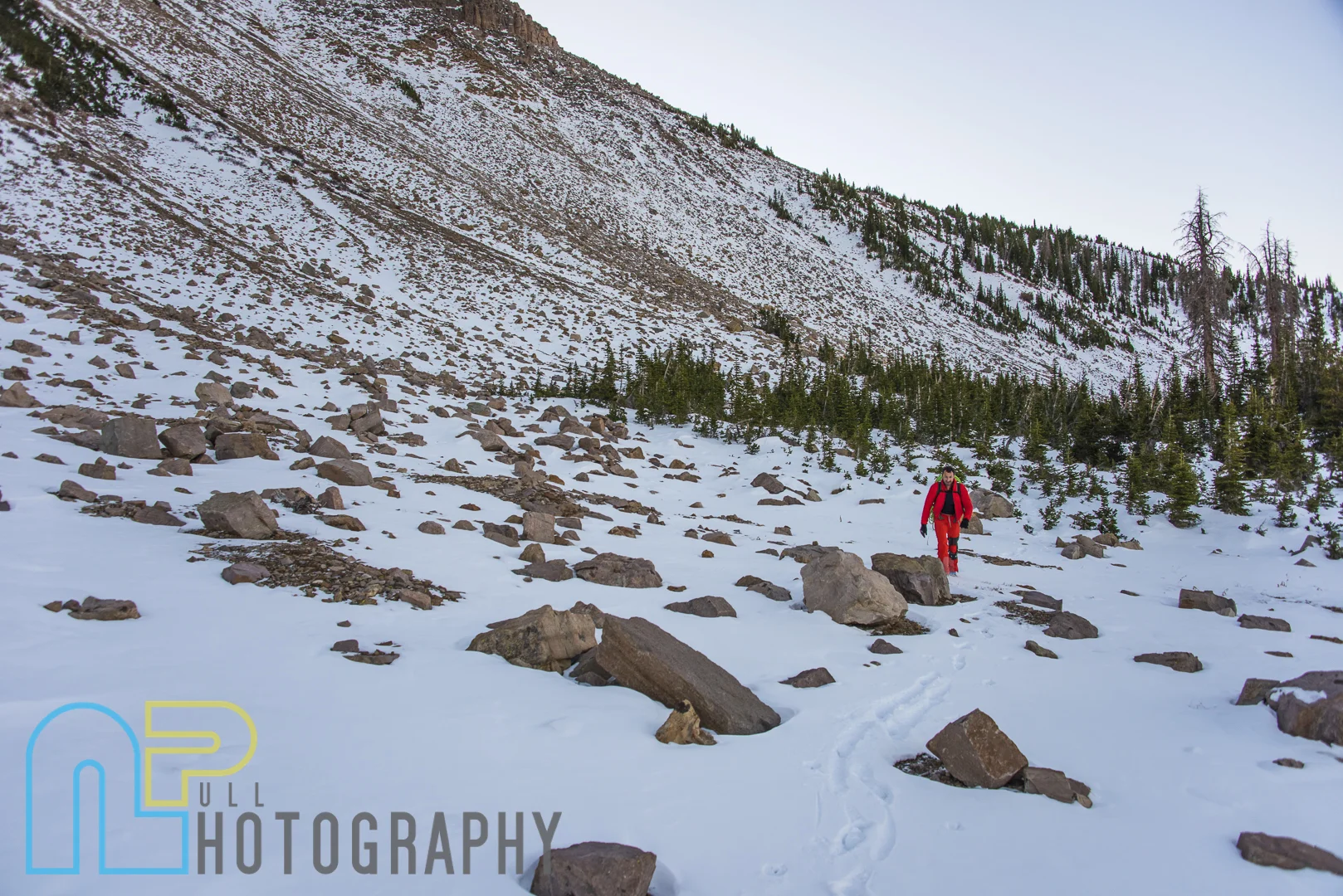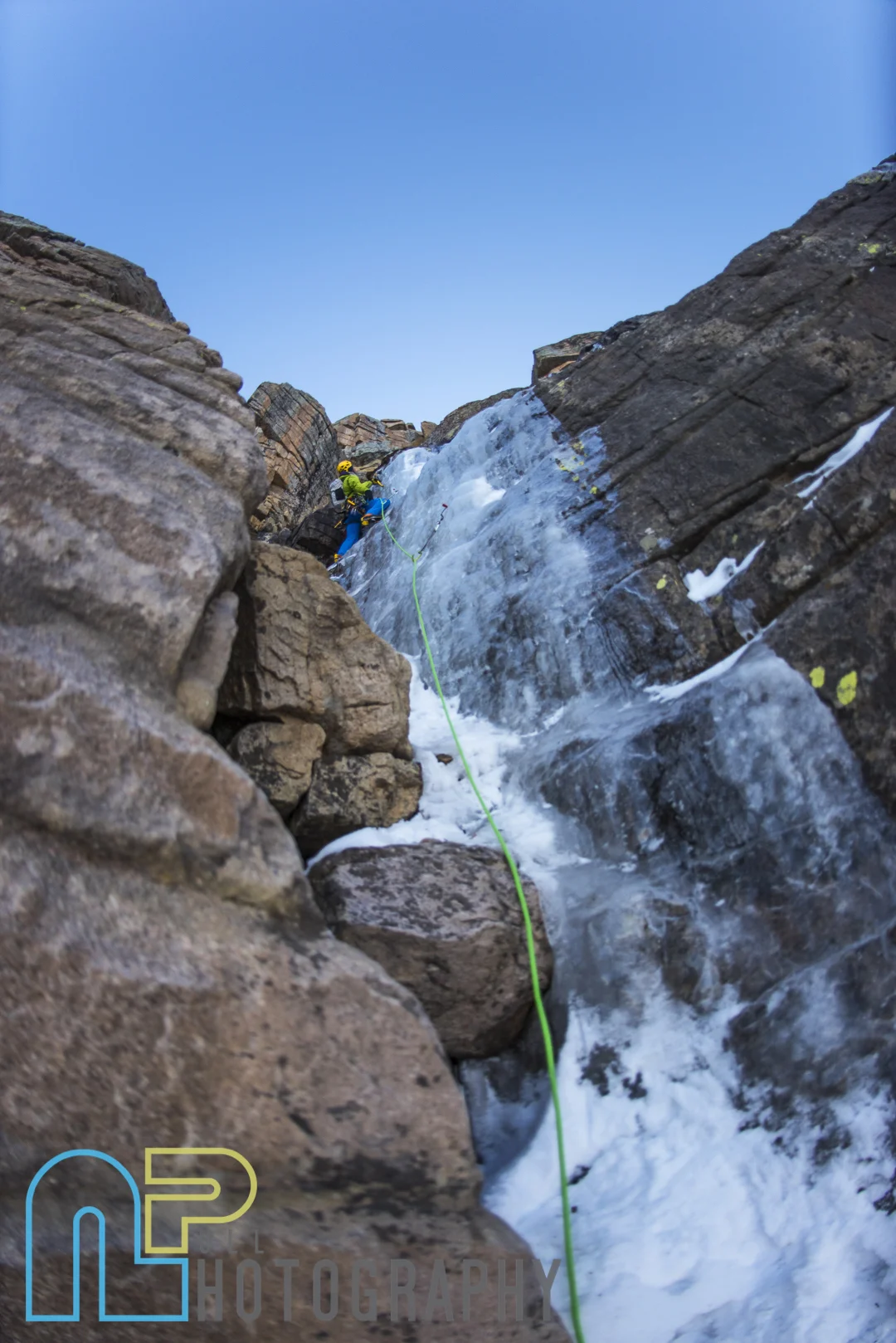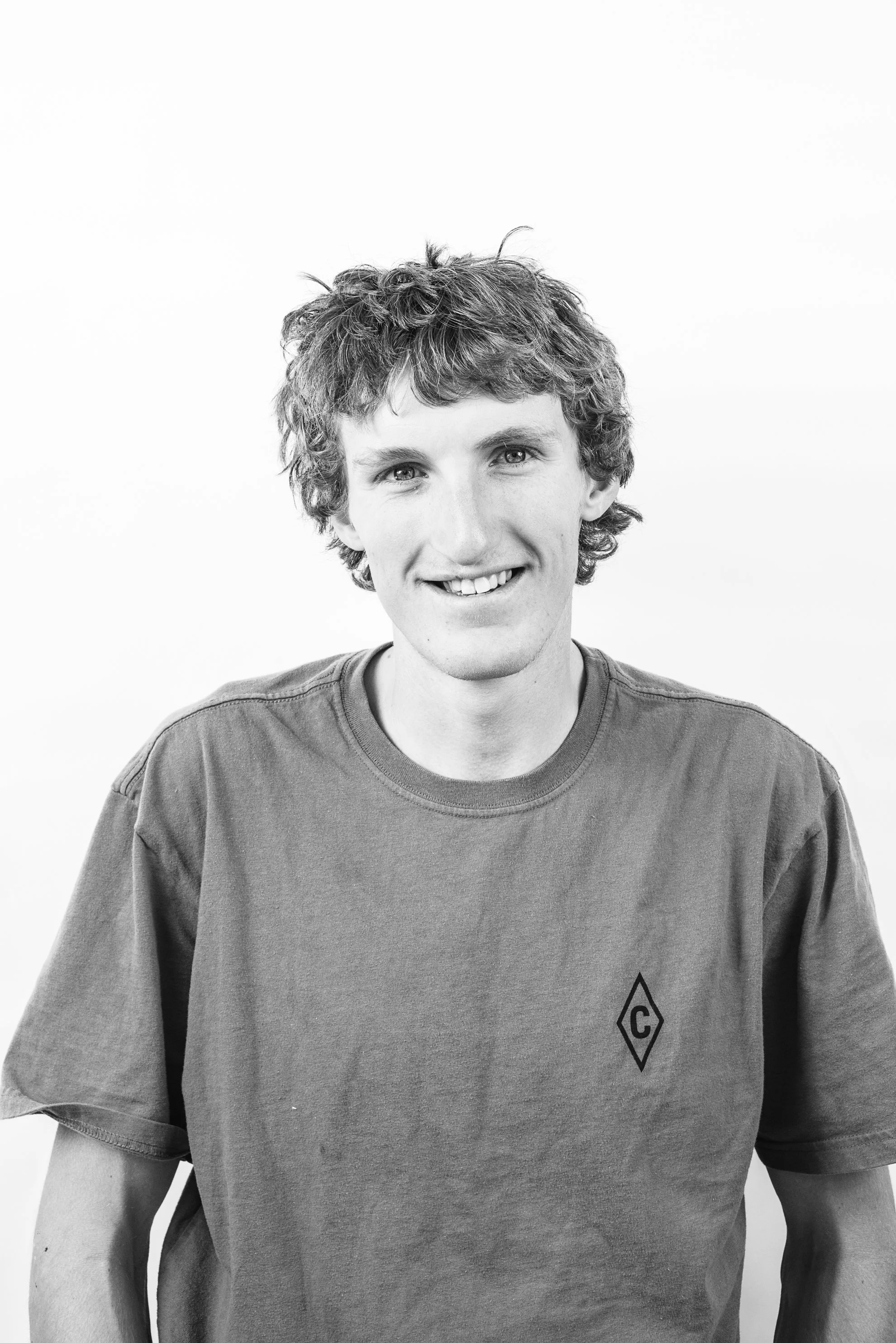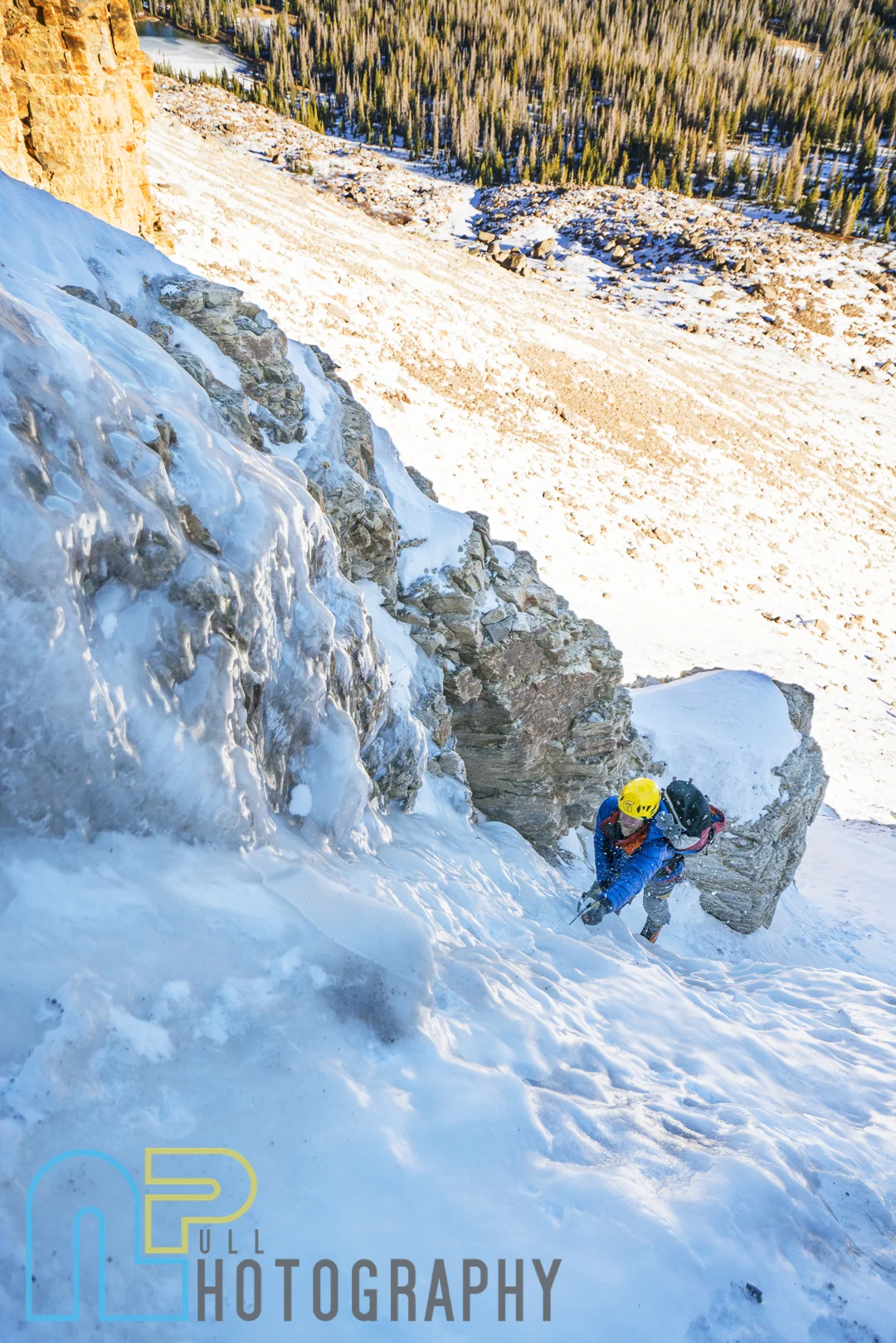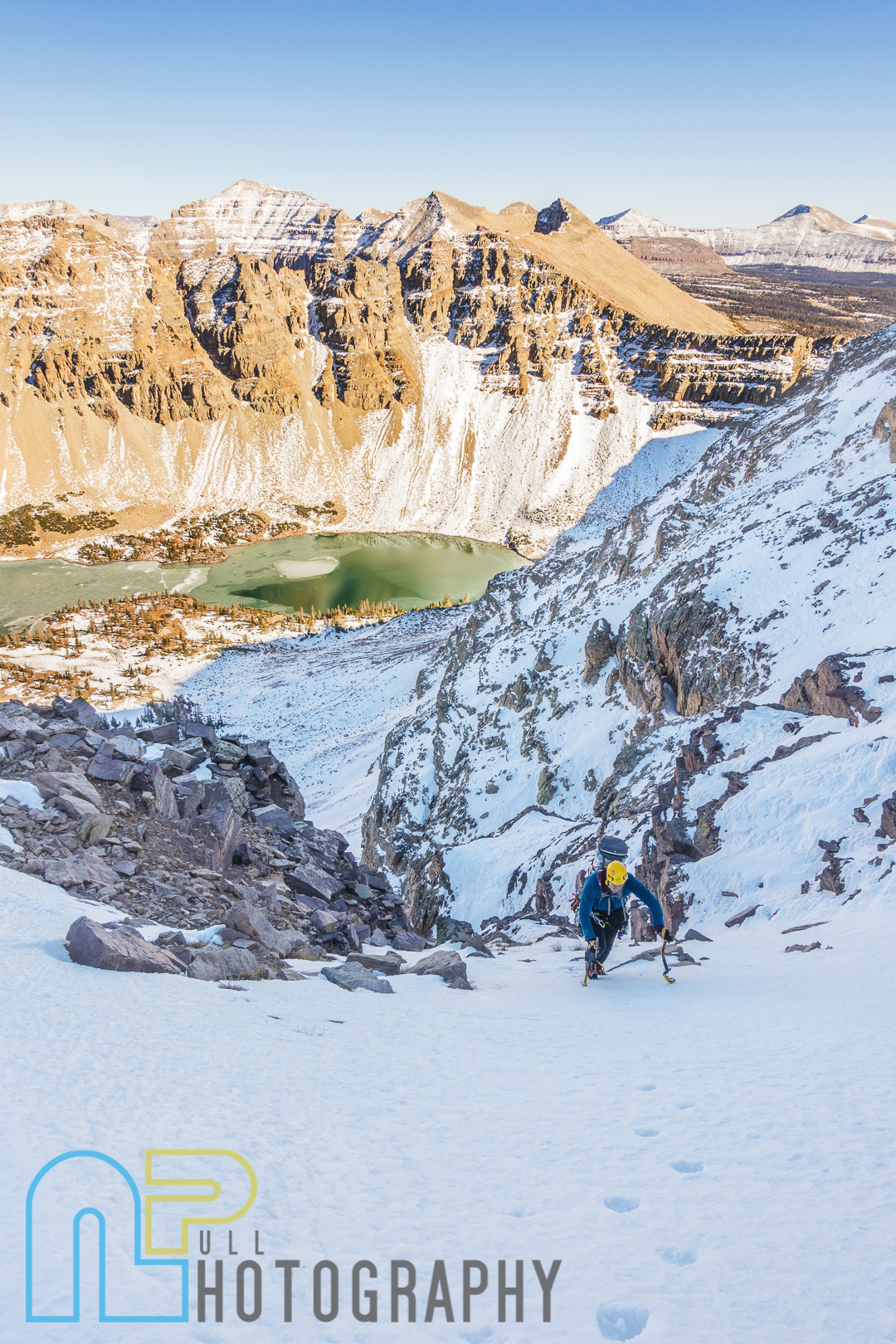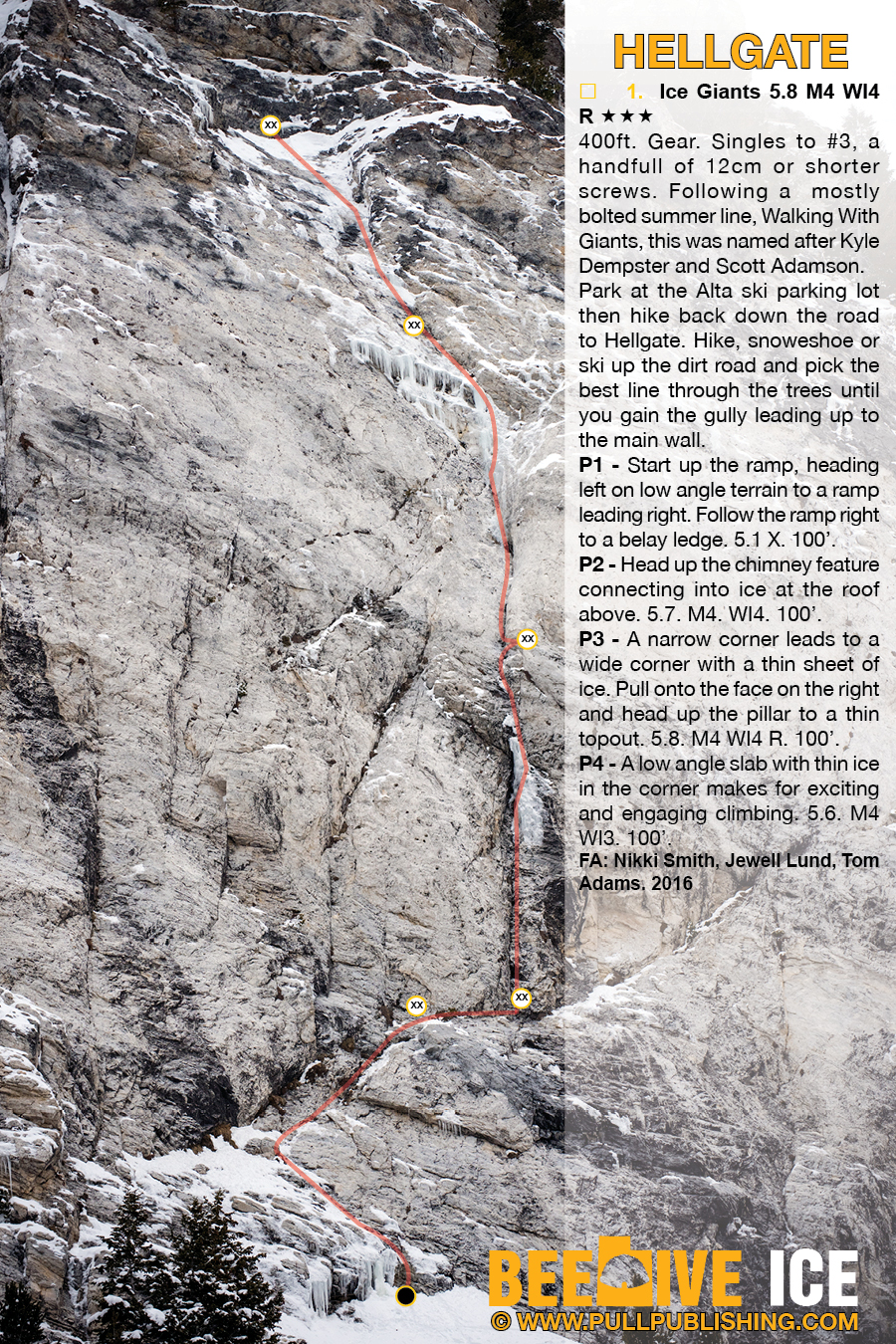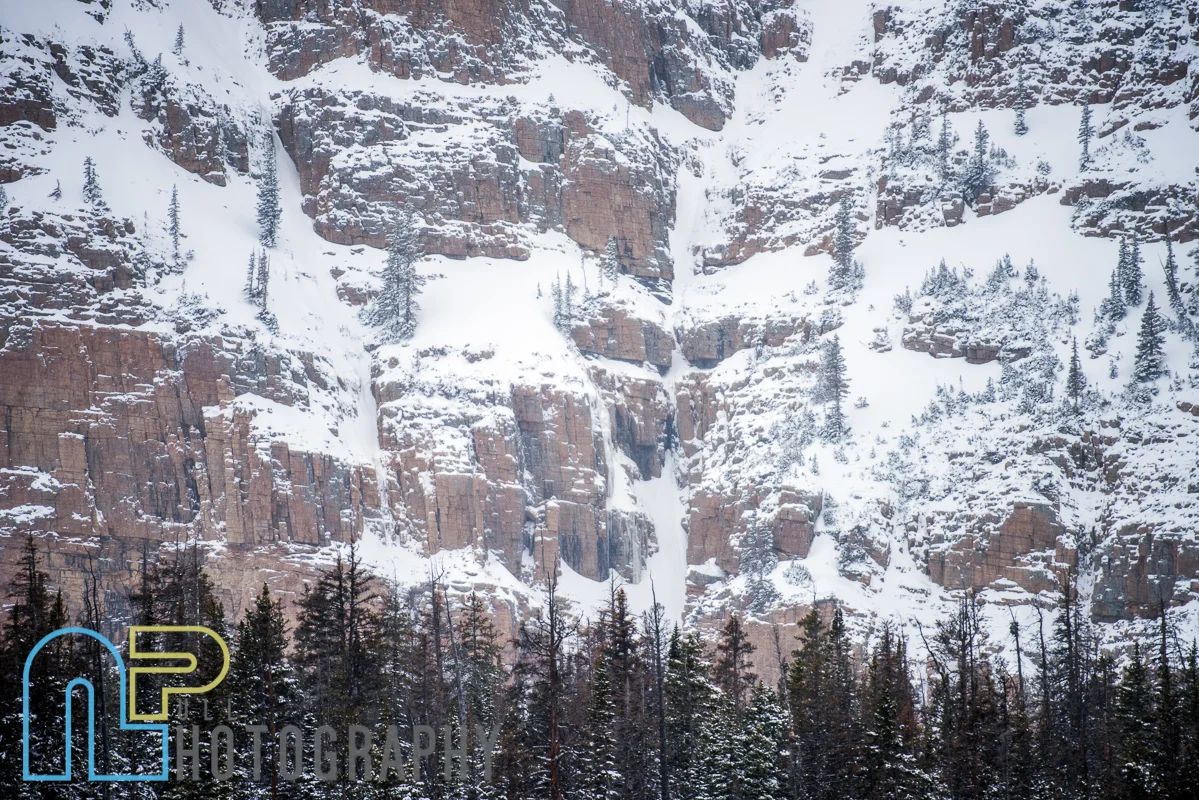Uintas - Hayden Peak - Kennedy Route first ascent - October 2017
Park at the Highline Trailhead and follow the summer trail to the Iron Hayden Wall or follow the directions from Beehive Ice to Stymingers Fink. Once at treeline, follow the edge of the trees and talus, avoiding the largest talus patches. The route is at the far left end of Hayden Peak. Expect 1-1.5 hours.
Less than a week after Hayden Kennedy's death, I headed to the Uintas to scout for ice. It had been a good fall and I'd already climbed ice a few days in September but haden't climbed any October ice yet. I've been watching Hayden peak for years as there are many potential lines on it but they come and go, sometimes within a few days time. This time I was lucky enough to catch a series of smears that linked together would offer up to 900' of ice.
A few days later Julien and I were hiking in the pre-dawn. Perfect temps and conditions and low snow on the approach made for fast hiking and we were at the base in a little more than an hour. I took the first pitch, 45' of almost vertical ice with a short M4 topout led to a traversing shelf heading right. Julien took pitch two, a full ropelength of WI3-. Pitch 3 was more WI3 to a snowfield and outcrop for the belay.
We traversed left from here to reach an icy smear in a corner. Thin ice pretected every few feet by bomber gear in the quartzite. 35' of M4 lead to a snowfield and a tree belay 160' above me.
Pitch 5 was a low angle gully. Starting narrow, just more than body-width, the gully opened up wider after 40' to rambling ice steps. I made the belay at 150' and brought Julien up. From here, the ice continues but looked like it did not go far. Wanting to check it out, I solo'd 200+' of WI2 until it ended in tallus above.
We decided not to continue up the tallus slope to the summit and headed back down to see if we might be able to find another hidden corner full of ice. Unfortunately it was not to be, but we were happy to have put together a fun, easy moderate ice line that only seemed fitting to name for a great American alpinist and friend, Hayden Kennedy.
Bald Mountain and Reids Peak at sunrise.
Bald Mountain and Reids Peak at sunrise.
Nikki Smith on pitch 1.
Nikki Smith on pitch 1.
Julien Baudrand on the traverse above the ice on pitch 1.
Julien Baudrand starting up pitch 2.
Julien Baudrand starting up pitch 2
Julien Baudrand topping out pitch 3.
Julien Baudrand starting up pitch 4.
Julien Baudrand finishing up pitch 4
Nikki Smith on pitch 5.
Tribute to a friend, Hayden Kennedy. (1990 – October 8, 2017)



